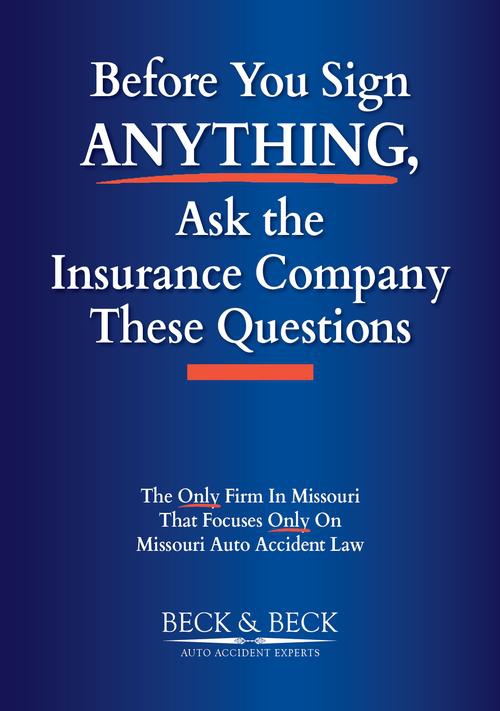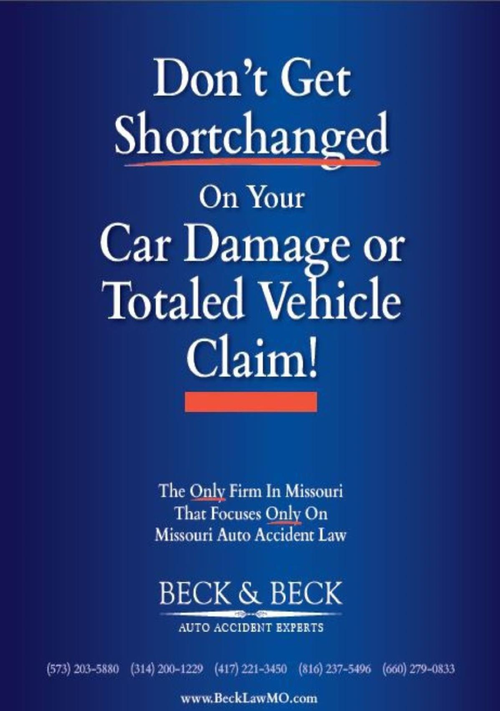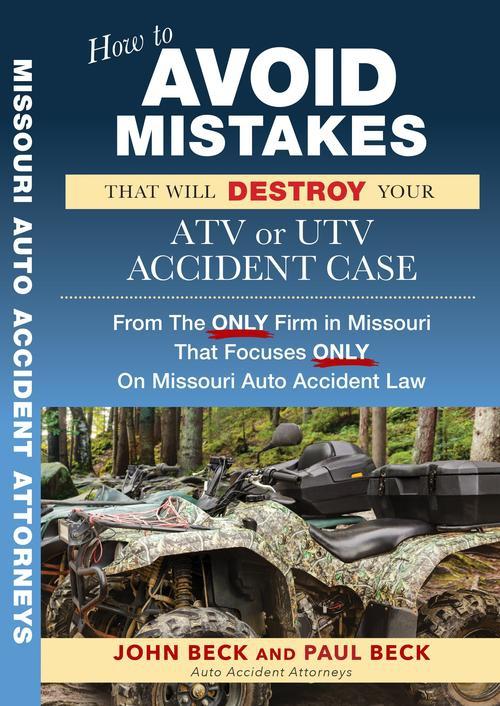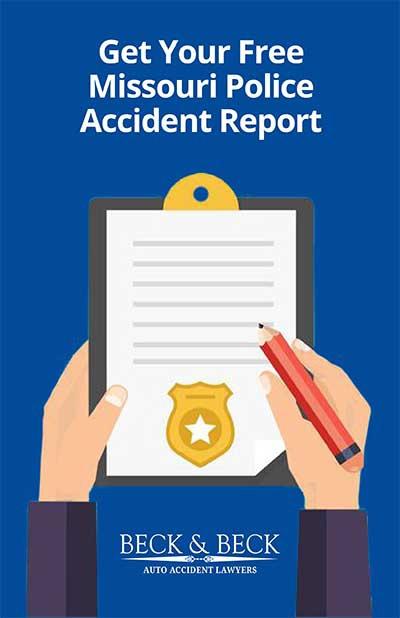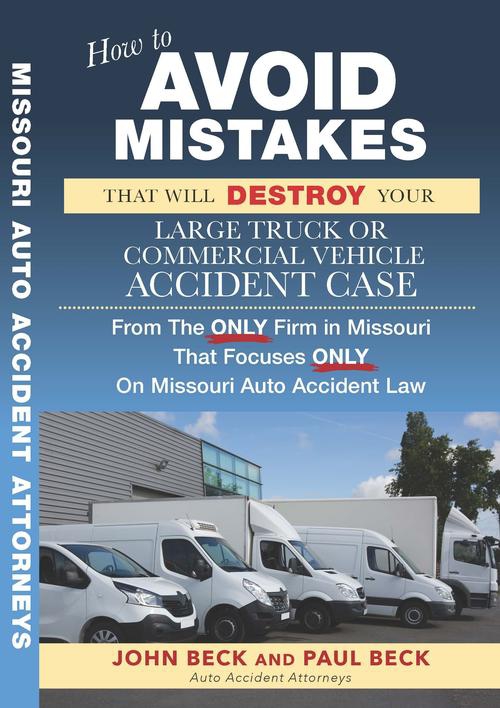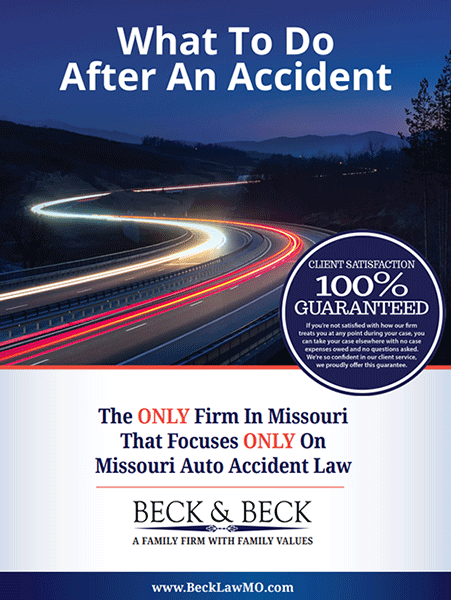In Missouri, shared fault means both drivers contributed to causing the accident. This happens when each person’s actions played a role in the crash, even if one driver was more responsible than the other.
Missouri follows a “pure comparative fault” rule, means you may still be eligible to recover damages even if you were mostly at fault for the accident, but your compensation will be reduced by your percentage of responsibility.
Your compensation simply gets reduced by your exact percentage of blame. For example, if you’re found 30% at fault in a crash that caused $100,000 in damages, you would receive $70,000.
Here are common shared fault situations:
- Speeding and red light running: One driver was going too fast while the other ran a red light
- Tailgating and brake checking: You were following too close when someone suddenly hit their brakes to annoy you
- Distracted driving and illegal turns: One person was texting while another made an unsafe turn
Understanding how shared fault works is crucial because insurance companies will try to assign you as much blame as possible to reduce what they have to pay.
They know that every percentage point of fault they can pin on you saves them money. That’s why having the right evidence and legal representation from an experienced auto accident attorney in St. Louis becomes so important when fault is disputed.
How Fault Percentages Are Assigned in Missouri
Insurance adjusters in Missouri determine fault percentages by examining multiple factors including:
- Police reports: Officers document their observations and initial findings about what happened
- Witness statements: People who saw the crash can back up your version of events
- Photos and videos: Pictures of damage, skid marks, and debris tell the story of the collision
- Dashcam footage: Video evidence is often the strongest proof available
- Phone records: These prove you weren’t texting or talking at the time of impact
- Traffic Laws: If any traffic laws were broken this can be a clear indication of fault on either of the drivers.
Adjusters evaluate each driver’s actions leading up to the crash, looking for violations like failure to yield, improper lane changes, or distracted driving.
Adjusters also consider vehicle damage patterns, skid marks, and final resting positions to reconstruct the accident sequence.
In complicated cases, they may consult accident reconstruction specialists or review traffic camera footage.
Their goal is to assign precise fault percentages that reflect each party’s contribution to the accident, which directly impacts how much compensation you can recover under Missouri’s pure comparative fault system.
What Insurer Tactics Should You Watch For?
Insurance companies want to increase your fault percentage to pay you less money. They’ll look for any reason to blame you more than necessary.
Watch out for these common arguments:
- Minor speeding becomes major fault: Going 5 mph over the limit gets labeled as “excessive speed”
- Normal following distance becomes tailgating: They claim you were too close even when you weren’t
- Delayed reactions become distraction: Any pause in your response gets called distracted driving
Don’t let them twist normal driving into negligent behavior. These tactics are designed to save them money at your expense.
When Do Expert Witnesses Make a Difference?
Accident reconstruction experts become valuable when fault is heavily disputed. These specialists use physics and engineering to figure out exactly how the crash happened.
They analyze vehicle damage, skid marks, debris patterns, and impact forces. Their scientific analysis can prove what really occurred when the insurance companies disagree with your version of events.
Expert witnesses cost money, but they can save you thousands by reducing your fault percentage. We decide when they’re worth the investment based on your specific situation.
How Does Shared Fault Change Your Compensation?
Your fault percentage directly reduces your compensation dollar for dollar. If your total damages equal $100,000 and you’re found 45% at fault, you receive $55,000.
Small changes in fault percentage create big differences in your final payout. That’s why fighting for every percentage point matters so much.
You can also owe money for the other person’s damages based on your fault percentage. If the other driver suffered damages and you are found partially at fault, you could be responsible for paying a portion of their losses based on your percentage of fault.
What Do Payout Examples Look Like at Different Fault Levels?
The amount you can recover after a car accident depends on your percentage of fault under Missouri law.
| Your Total Damages | Your Fault Percentage | Your Recovery |
| $50,000 | 10% | $45,000 |
| $50,000 | 30% | $35,000 |
| $50,000 | 60% | $20,000 |
| $50,000 | 90% | $5,000 |
Even at 90% fault, you still get something. That’s the power of Missouri’s pure comparative fault rule working in your favor.
The Most Typical Shared Fault Crash Scenarios
Certain types of accidents almost always involve fault disputes. Knowing these patterns helps you understand what to expect and how to protect yourself.
Left Turn and Speeding Crashes
Left-turning drivers must yield to oncoming traffic. But if the oncoming driver is speeding or runs a red light, both drivers often share fault.
These intersection crashes get complicated quickly. The turning driver violated the right-of-way, but the speeding driver made the crash worse than it needed to be.
Traffic light timing becomes important evidence. If the light was yellow or red when the speeding driver entered, they’ll get more blame.
Chain Reaction Crashes
Chain reaction crashes involve multiple vehicles where one collision causes others. Each driver gets assigned their own fault percentage based on their actions.
Common factors include following distance, speed, and reaction time. The first driver who caused the initial crash usually gets the most blame, but others can share fault too.
Each driver’s insurance only pays for their insured person’s percentage of fault. This can get complicated when multiple insurance companies are involved.
Rear-End Crashes
Most people think rear-end crashes are automatically the back driver’s fault. That’s usually true, but not always.
The front driver might share blame if they had broken brake lights, stopped suddenly for no good reason, or cut someone off then immediately hit the brakes. These situations can shift some fault to the front driver.
Dashcam footage becomes crucial in rear-end cases. It can prove whether the front driver did something wrong or if the back driver was following too closely.
What Steps Protect a Shared Fault Claim?
What you do immediately after the accident affects your entire claim. Taking the right steps protects you from unfair blame and strengthens your position.
What Should You Say or Not Say to Insurers?
Insurance adjusters will try to get you to say something that increases your fault. Everything you tell them can be used against you later.
Follow these rules when talking to insurance companies:
- Don’t apologize: Saying “I’m sorry” sounds like admitting fault even when you’re just being polite
- Don’t guess about details: If you’re unsure about speeds or distances, say you don’t know
- Don’t give recorded statements: The other driver’s insurance company isn’t your friend
Stick to basic facts about what happened. Save detailed explanations for your own attorney who’s working to protect your interests.
What Evidence Should You Gather Right Away?
Collecting evidence at the scene gives you the best chance of proving your case. Don’t rely on the police report alone.
Take these steps immediately:
- Call police to create an official accident report
- Photograph all vehicles, damage, and the surrounding area
- Get witness names and phone numbers before they leave
- Note weather conditions, traffic signals, and road hazards
- Save dashcam footage before it gets erased
- Seek medical attention to document your injuries
The more evidence you have, the harder it becomes for insurance companies to blame you unfairly.
Do You Need a Lawyer if Fault Is Disputed?
Disputed fault cases aren’t just about getting compensation. They’re about fighting unfair blame that can follow you for years through higher insurance rates and personal liability.
The other driver’s insurance company has experienced adjusters and lawyers working to put maximum blame on you. Having your own attorney levels the playing field.
How Do We Lower Your Assigned Fault?
At Beck & Beck Missouri Car Accident Lawyers we don’t accept the insurance company’s fault determination without a fight. Our investigation starts immediately to gather evidence that protects you.
Our approach includes:
- Independent investigation: We don’t rely on police reports or insurance company findings
- Fresh witness interviews: We talk to witnesses while their memories are still clear
- Expert analysis: When needed, we bring in accident reconstruction specialists
- Evidence preservation: We secure dashcam footage and surveillance video before it disappears
We’ve seen insurance companies change their fault assessments when faced with strong evidence. That’s why thorough investigation matters so much.
When Do We File Suit in Shared Fault Cases?
Most car accident cases settle without going to court. But when insurance companies won’t budge on unfair fault assignments, we’re ready to file a lawsuit.
Taking your case to court moves the decision from an insurance adjuster to a Missouri jury. Juries often see fault differently than insurance companies do.
The threat of trial also motivates insurance companies to negotiate more fairly. They know juries can be unpredictable and might assign fault in ways that cost them more money.
Blamed For An Accident That Wasn’t Your Fault? Consult With Our Expert Auto Accident Law Firm in Missouri
At Beck & Beck Missouri Car Accident Lawyers, our team is dedicated to helping injured Missourians fight unfair blame and pursue fair compensation. We fight insurance company fault assignments to help our clients recover the compensation they deserve.
If insurance companies are trying to blame you for an accident that wasn’t entirely your fault, call us today. We offer free consultations to discuss your case and work on contingency fees. You pay us nothing unless we win your case.
FAQ
Can I Still Recover Money if I Was 75% at Fault for My Missouri Car Accident?
Yes, Missouri’s pure comparative fault law allows you to recover compensation even if you were mostly at fault. In this situation, you could still recover a portion of your total damages, even if you were mostly at fault.
How Long Do I Have to File a Car Accident Claim When Fault Is Disputed in Missouri?
Missouri gives you five years from the accident date to file a personal injury lawsuit. However, evidence disappears quickly, so contact an attorney as soon as possible to protect your rights.
What Happens if the Other Driver’s Insurance Company Says I’m 100% at Fault?
The insurance company’s opinion isn’t final. You can challenge their fault determination with evidence, witness statements, and expert testimony. An experienced attorney can help you fight unfair blame.
Will My Insurance Rates Go Up if I’m Found Partially at Fault in Missouri Car Accidents?
Yes, being assigned any percentage of fault will likely increase your insurance premiums. The exact increase depends on your insurance company and your assigned fault percentage.
Can Bad Weather Reduce My Fault Percentage in a Missouri Car Accident?
Weather conditions like rain, snow, or ice can be contributing factors that reduce individual driver fault. However, drivers are still expected to adjust their driving for dangerous conditions.

